Moments in Time - When Was Photography Invented?
When was photography invented, and how has it changed the world we live in today?
These questions have fascinated people for years, as photography is an art form that has revolutionized the way we capture and remember our lives.
From the earliest days of photography to the latest digital cameras, this medium has had a profound impact on the way we see and experience the world.
In this article, we'll explore the origins of photography and we'll delve into the remarkable inventors and photographers who pioneered new techniques and pushed the boundaries of what was possible, leading to some of the most historically important and influential photos ever taken.
So, let's journey back in time and discover the magic of photography, from its humble beginnings to its current position as one of the most powerful and ubiquitous art forms in the world.

In this article, you will learn:
- When Was Photography Invented - History of Photography
- The Basis for the Creation of Photography
- 7 Milestone Photographs in Photography History
- The Enduring Impact of Photographs
When Was Photography Invented - History of Photography
The history of photography dates back to the early 19th century when pioneers started experimenting with the science of capturing light to create lasting images. This fascinating journey began with Joseph Nicéphore Niépce, who successfully created the first permanent photograph in 1826.
Niépce used a camera obscura, a device that projected an image onto a surface, and a light-sensitive material called bitumen of Judea to capture the image. However, this early process was slow and required several hours of exposure time, making it impractical for widespread use.
The turning point in the evolution of photography came in 1839 with the invention of the daguerreotype process by Louis Daguerre, a French artist, and chemist.
This innovative technique reduced exposure time and made it possible to obtain detailed images on a silver-coated copper plate.
As a result, photography became more practical and accessible to the general public, paving the way for its widespread adoption.
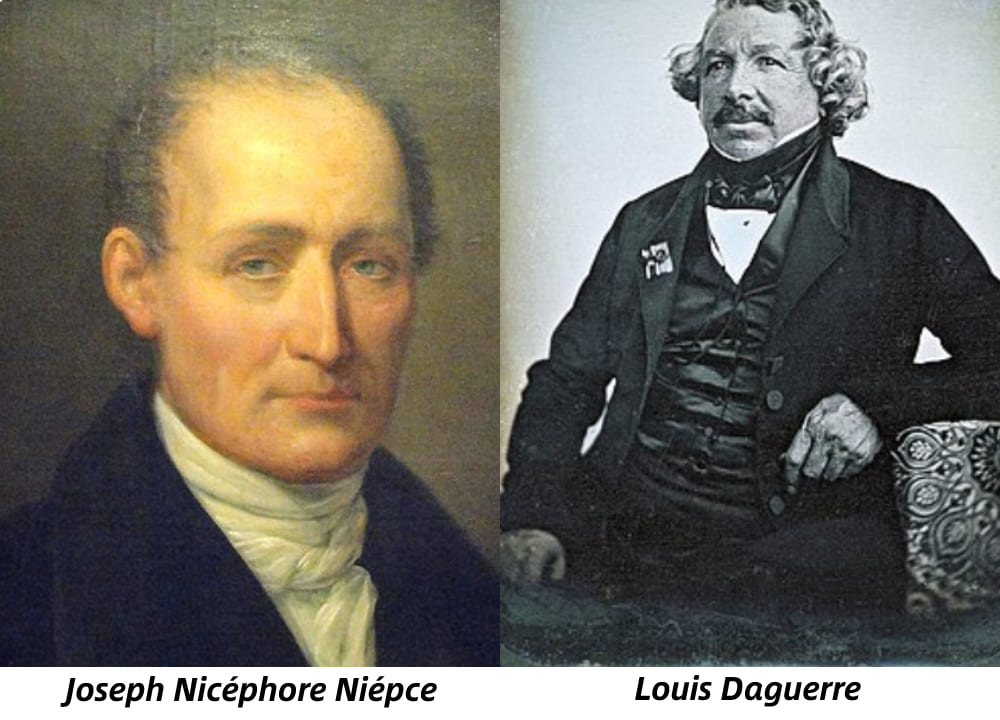
Joseph Nicéphore Niépce & Louis Daguerre
In the 1850s, another significant advancement in photographic technology emerged: the wet plate collodion process. Developed by Frederick Scott Archer, an English sculptor and photographer, this method involved coating a glass plate with a light-sensitive emulsion and then exposing it to light.
The wet plate collodion process was faster and more affordable than the daguerreotype process, enabling photographers to take more spontaneous and natural photographs.
By the late 19th century, the wet plate collodion process was replaced by the dry plate collodion process, which simplified the procedure and made it more user-friendly.
Dry plates were prepared in advance by applying a light-sensitive gelatin emulsion on glass, which could be stored until needed. This advancement in technology quickly became the standard photographic process and allowed for more rapid image capture.
The early 1900s witnessed the development of the gelatin silver halide process, which laid the foundation for most modern photographic processes.
This technique involved the use of a gelatin emulsion containing silver halide crystals, which were sensitive to light. When exposed to light and subsequently developed, these crystals formed a latent image that could be made visible through a chemical process.
Throughout the 20th century, photography continued to evolve with the introduction of new technologies and techniques, such as film and digital cameras.
The invention of 35mm film in the early 1900s by Oskar Barnack made it easier for people to carry and operate cameras, leading to the popularization of amateur photography.
In the late 20th century, digital cameras revolutionized the medium by allowing instant image capture, editing, and sharing without the need for physical film.
Today, photography is more popular than ever, with millions of people around the world using it to capture moments, express themselves, and tell stories.
The invention and subsequent advancements in photographic technology have transformed the way we document our lives, connect with one another, and understand the world around us.
The Basis for the Creation of Photography
The creation of photography is a fascinating story that began with two key elements: the photographic dark box and light-sensitive materials.
The photographic dark box, also known as the camera obscura, was a device used by artists and scientists for centuries to project an image onto a flat surface.
The camera obscura provided a crucial foundation for the modern camera, which uses a lens to focus light onto a light-sensitive material.
The origins of the camera obscura date back to ancient Greece, where philosophers such as Aristotle and Euclid studied the phenomenon of light and created simple pinhole cameras.
However, it wasn't until the Renaissance that the camera obscura gained widespread popularity as an artistic tool. Artists such as Leonardo da Vinci and Johannes Vermeer used camera obscura to create realistic images of the world around them.
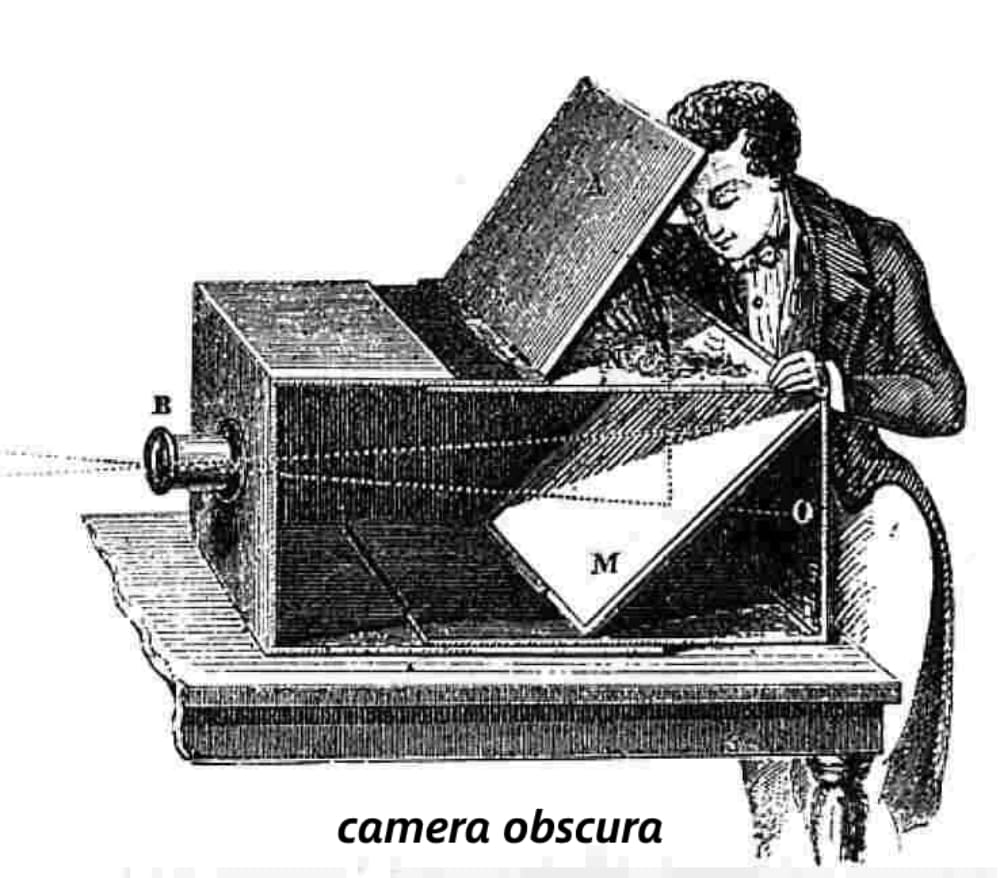
The development of light-sensitive materials was another important factor in the invention of photography. The first materials used were bitumen of Judea and silver chloride, which were sensitive to light but required long exposure times.
In 1826, French inventor Joseph Nicéphore Niépce created the first permanent photograph using bitumen-coated paper and a camera obscura. However, the image required an eight-hour exposure time and was not very detailed.
Later, other materials such as collodion and gelatin-silver emulsions were developed, which allowed for faster exposure times and more detailed images.
In 1839, Louis Daguerre and William Henry Fox Talbot independently developed processes for creating photographic images using silver-coated plates and paper, respectively. This marked the beginning of modern photography.
The creation of photography was a result of centuries of experimentation and innovation, fueled by the desire to capture and reproduce the world around us.
The camera obscura and light-sensitive materials were crucial elements in the development of photography, and their evolution has led to the incredible technology we have today.
7 Milestone Photographs in Photography History
Photography has a rich and fascinating history that spans more than 200 years. Photography has come a long way. It started out in the early 19th century as a humble medium.
Today, it has evolved with digital technology into a powerful tool. It has captured some of the most iconic and groundbreaking images in history.
This section will explore seven milestone photographs. These photographs have had a major influence on photography's development.
They range from the earliest days of photography to the present day. We will explore the intriguing history of photography. We will learn how it has developed and transformed over time.
1. The World's First Photograph
The world's first photograph, "View from the Window at Le Gras" is a remarkable achievement in the history of photography.
Created by Nicéphore Niépce in 1827, the photograph captures the view from Niépce's window in France. The image was created using a camera obscura and a light-sensitive material called bitumen of Judea, which was coated onto a pewter plate.
The process of creating the photograph was slow and labor-intensive. Niépce had to expose the plate to light for several hours, and then use a solvent to dissolve away the unexposed bitumen. This left behind a permanent image of the view from his window.
The photograph is an important milestone in the development of photography because it was the first permanent photograph ever created.
Prior to this, all photographs were temporary and could not be preserved for more than a few hours. Niépce's invention allowed for the creation of images that could be preserved for years and even centuries.
Today, "View from the Window at Le Gras" is a valuable artifact of photographic history. It is housed in the collection of the Harry Ransom Center at the University of Texas at Austin and is considered one of the most important photographic artifacts in the world.
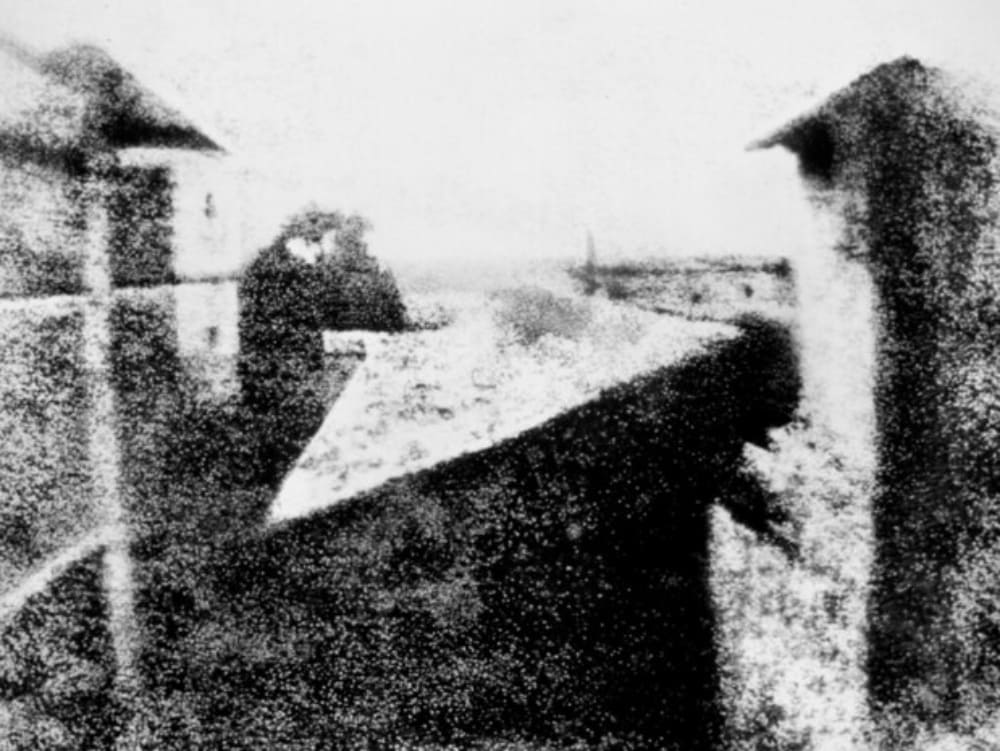
2. The World's First Color Photograph
James Clerk Maxwell's achievement in producing the world's first color photograph is an important milestone in the history of photography. Maxwell was a Scottish physicist who had a keen interest in color theory, and he used his knowledge to create the groundbreaking image in 1861.
Maxwell's color photograph, which features a tartan ribbon, was created by photographing the ribbon three times using red, blue, and yellow filters.
Each photograph captured a different color channel, and the resulting images were then combined to create a single-color composite image.
The process was complex and required a great deal of skill and expertise, but the result was a stunning color photograph that demonstrated the potential of this new technology.
Maxwell's work in color theory and color photography laid the foundation for future developments in the field, including the invention of the first color film in the early 1900s.
Today, color photography is an integral part of our lives, and we take it for granted, but it was once a revolutionary new technology that was made possible through the work of pioneers like James Clerk Maxwell.
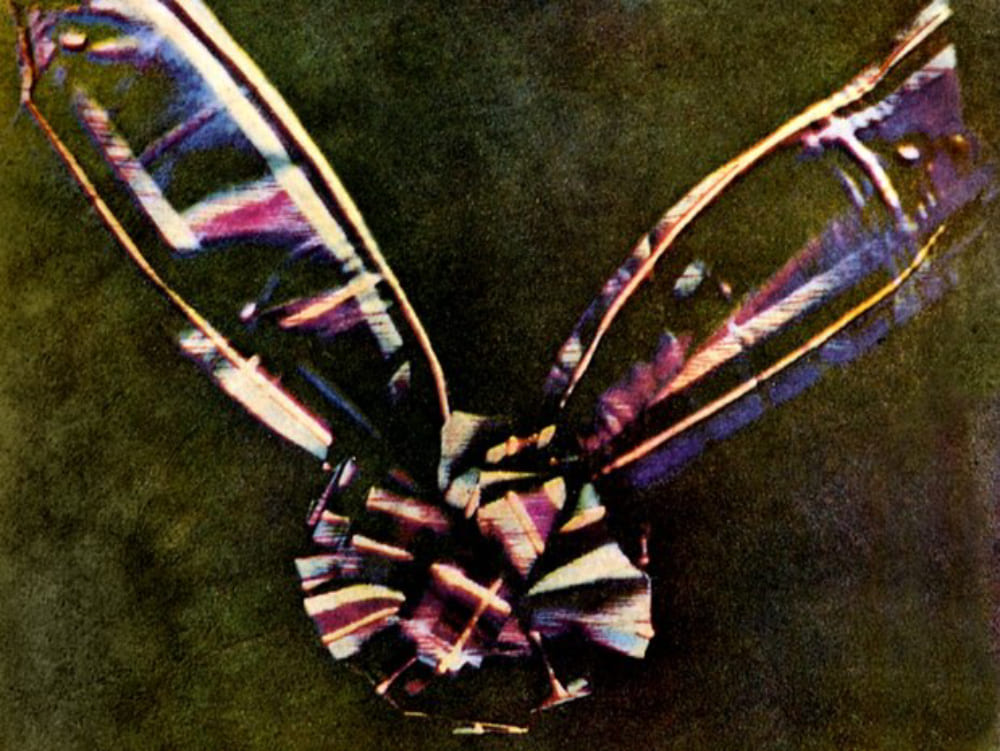
3. The World's First Movement Photograph
Eadweard Muybridge's photograph of a galloping horse is an iconic image that marked a significant milestone in the history of photography. The photograph was created in 1878, after six years of experimentation, and it was the first photograph of movement ever produced.
Muybridge's interest in capturing the sequence of movement was sparked by a debate over whether a horse's hooves all leave the ground during its gait.
To settle the debate, Muybridge set up 12 trip-wire cameras along a racetrack and arranged them in the path of a galloping horse. As the horse passed each camera, it triggered the shutter, capturing a series of images that showed the horse's movement in precise detail.
The resulting series of photographs proved that there is a point in the horse's gait when all four hooves are off the ground. This discovery was a significant achievement in the field of photography, and it paved the way for the development of motion pictures.
Muybridge's work in the photography movement was groundbreaking and influential. His techniques and innovations set the stage for future developments in the field of photography, and his legacy continues to inspire photographers and artists to this day.
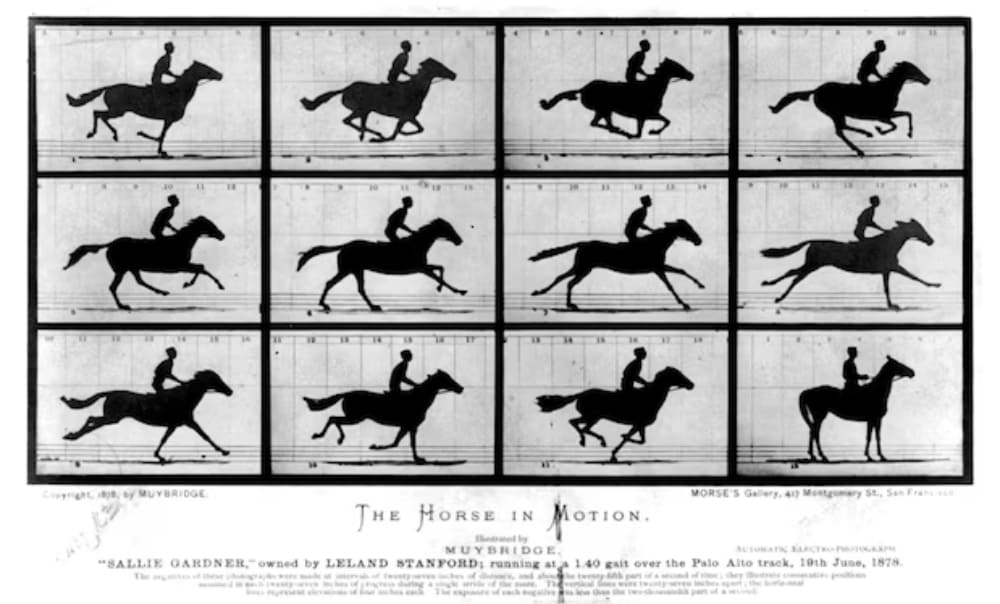
4. The World's First Nighttime Flashlight Photograph
George Shiras' photograph of the white-tailed doe with her fawns is an important milestone in the history of nighttime photography.
It was one of the world's first photographs of animals taken at night using a flashlight, and it was captured by the pioneering photographer and wildlife enthusiast, George Shiras.
Shiras was fascinated by the beauty of nature and wildlife and was one of the pioneers of flashlight and trip-wire photography.
His techniques allowed him to capture stunning images of animals in their natural habitat at night, using a remote-control flashlight camera that was triggered when an animal stepped on a trip wire.
The photograph of the white-tailed doe with her fawns was captured in Whitefish River, Michigan, around 1906.
The image is a beautiful and haunting portrayal of these creatures in the darkness of night. It showcases Shiras' skill and expertise in using a flashlight to illuminate the scene and capture the beauty of the animals in their natural habitat.
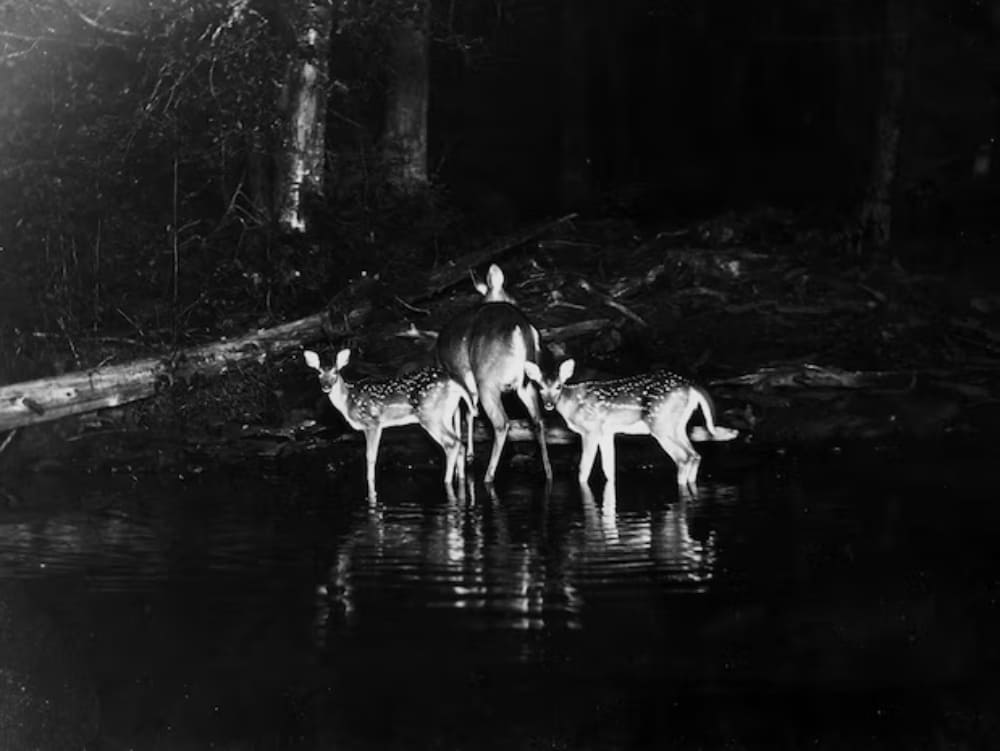
5. The World's First Underwater Color Photograph
The world's first underwater color photograph was taken by Dr. William Longley and National Geographic staff photographer Charles Martin in 1926.
Longley and Martin were pioneers in the field of underwater photography, and they developed a technique for taking color photographs underwater using cameras encased in waterproof housing and magnesium flash powder for illumination.
Their photograph of the hogfish was a groundbreaking achievement in the field of underwater photography and marked the birth of underwater color photography.
The underwater photograph of the hogfish was a significant milestone in the history of photography, and it paved the way for future developments in the field.
Today, underwater photography is a popular and important genre of photography, with advances in technology making it easier and more accessible than ever before.
However, Longley and Martin's photograph remains an important artifact of photographic history, and it continues to inspire and influence photographers to this day.
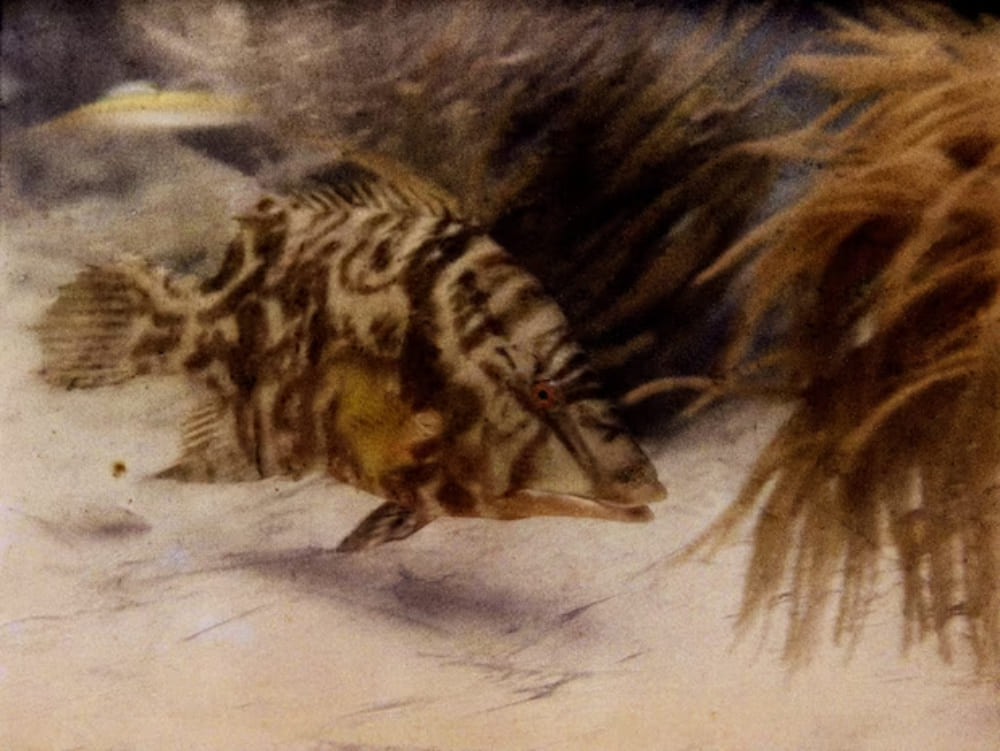
6. The World's First Archaeological Photograph
Hiram Bingham's photographs of the lost city of Machu Picchu marked a significant milestone in the history of archaeological photography.
Bingham was a Yale University professor and explorer who, in 1912, was searching for the ancient Inca capital of Vilcabamba in the Peruvian Andes when he stumbled upon the ruins of Machu Picchu.
Bingham's photographs of Machu Picchu were some of the first archaeological photographs ever taken. They helped to bring the ancient city to the attention of the world and sparked a renewed interest in Inca culture and history.
Bingham's photographs were published in National Geographic, which helped to popularize archaeology and bring it out of the field and into people's homes.
Today, Machu Picchu is one of the most visited archaeological sites in the world, and Bingham's photographs continue to inspire and influence archaeologists and photographers alike.
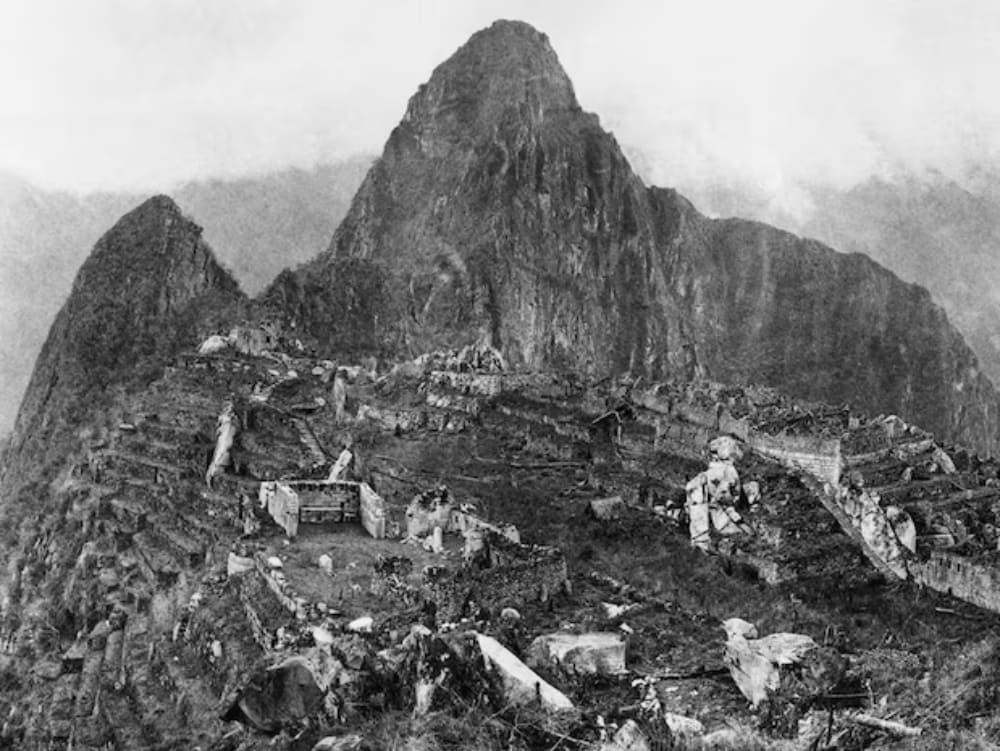
7. Afghan Girl Photograph
The famous photo of the Afghan Girl is a portrait of a young Afghan refugee named Sharbat Gula, taken by National Geographic photographer Steve McCurry in 1984.
The photograph shows Gula staring directly at the camera with piercing green eyes and a red headscarf draped over her head.
The story behind the photograph is as powerful as the image itself. McCurry encountered Gula at a refugee camp in Pakistan during the Soviet-Afghan War.
He was struck by her intense gaze and asked if he could take her photograph. Gula agreed, and the resulting image became one of the most iconic photographs of the 20th century.
The impact of the photograph was immediate and profound. It was featured on the cover of National Geographic in 1985, and it quickly became one of the most recognized and celebrated photographs in the world.
The image captured the attention of people around the globe, and it helped to raise awareness of the plight of Afghan refugees.
The impact of the photograph continues to this day. McCurry went on to track down Gula decades later and documented her life in a series of photographs.
The Afghan Girl remains an iconic image of the power of photography to capture the human experience and bring attention to important social and political issues.
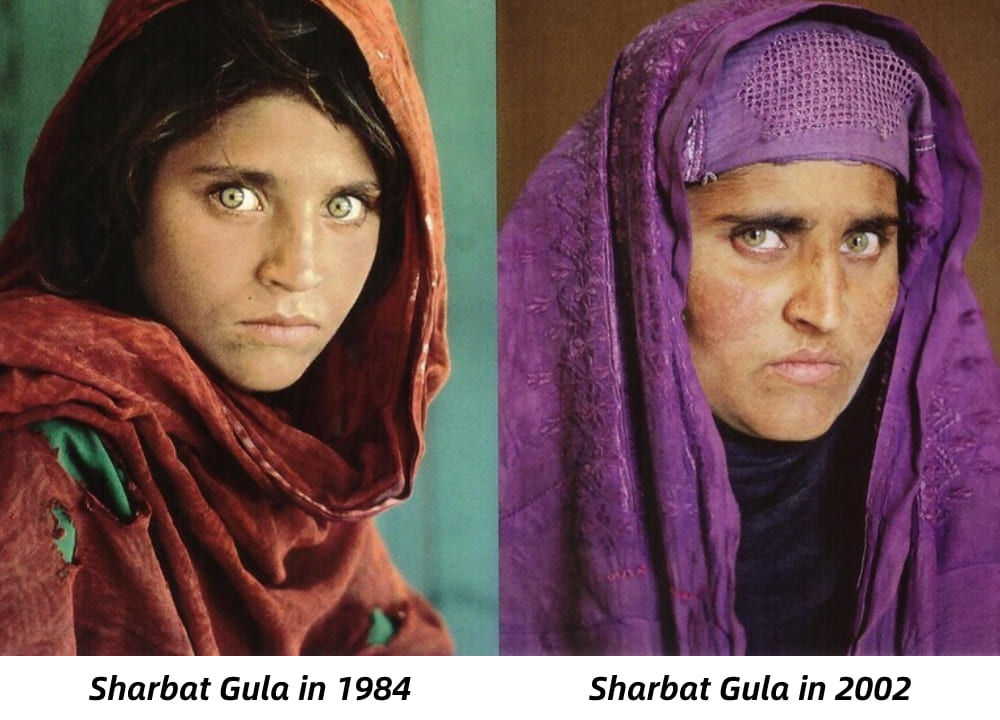
The Enduring Impact of Photographs
The history of photography is a testament to the power of images to document, inspire, and change the world. From the world's first photograph to the iconic images of the present day, photographs have played a significant role in shaping our understanding of the world around us.
Through the lens of photography, we have seen the beauty of nature, the horrors of war, the struggles of marginalized communities, and the triumphs of human achievement.
Photographs have the unique ability to communicate emotions and ideas in a way that transcends language and culture, making them a universal language that speaks to us all.
Today, the development of photography has continued with the advancement of post-editing software, such as TourBox, which allows photographers to enhance and refine their images with greater precision and control.
Just as the pioneers of photography pushed the boundaries of what was possible with their cameras and techniques, photographers today are using post-editing tools to take their images to new heights of creativity and expression.

Now that you know when was photography invented, you have a better understanding of the history and evolution of this amazing medium. Through the lens of history, we can see the enduring impact and significance of photographs.
They have the power to change hearts and minds, to inspire action and empathy, and to preserve our shared history and culture for future generations.
With TourBox, photographers have a powerful tool at their disposal to continue the legacy of photography and push the boundaries of what is possible in the art form.